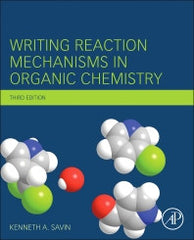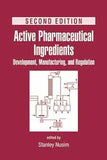Writing Reaction Mechanisms in Organic Chemistry, 3rd Edition Author K Savin
Writing Reaction Mechanisms in Organic Chemistry, 3rd Edition
Author : K Savin
Release Date: 11 Jul 2014
Imprint:Academic Press
Pages: 510
Key Features
Extensively rewritten and reorganized with a completely new chapter on oxidation and reduction reactions including stereochemical reactions
Essential for those who need to have mechanisms explained in greater detail than most organic chemistry textbooks provide
Now illustrated with hundreds of colorful chemical structures to help you understand reaction processes more easily
New and extended problem sets and answers to help you understand the general principles and how to apply this to real applications
New information boxes throughout the text to provide useful background to reactions and the people behind the discovery of a reaction
Description
Writing Reaction Mechanisms in Organic Chemistry, Third Edition is an invaluable guide to understanding the movements of atoms and electrons in the reactions of organic molecules. Expanding on the successful book by Miller and Solomon, this new edition further enhances your understanding of reactions. The whole book has been extensively revised with new material including a completely new chapter. To further aid understanding, all illustrations have been redrawn with the use of color to clearly indicate how each reaction works. This book illustrates that understanding organic reactions is based on applying general principles rather than memorizing unrelated processes. This approach helps you understand that writing mechanisms is a practical method of applying knowledge of previously encountered reactions and reaction conditions to new reactions. After simply explaining basic principles, this book then examines each type of reaction. A clear background and explanation is provided for each reaction, followed by an example of the reaction in use. At the end of each section is a series of problems, with a wider range of challenging questions, to test your understanding of the mechanism, with answers to check that you are right. Students and research chemists alike will find this revised book useful to organize what may seem an overwhelming quantity of information into a set of simple general principles and guidelines for determining and describing organic reaction mechanisms
Appendix A Lewis Structures of Common Functional Groups
Appendix B Symbols and Abbreviations Used in Chemical Notation
Appendix C Relative Acidities of Common Organic and Inorganic Substances
IndexX

















